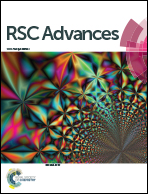Solvation effect on the ESIPT mechanism of nitrile-substituted ortho-hydroxy-2-phenyl-oxazolines
Abstract
In this study, density functional theory (DFT) and time-dependent density functional theory (TD-DFT) were used to unveil the solvation effects on the excited-state intramolecular proton transfer (ESIPT) of nitrile-substituted ortho-hydroxy-2-phenyl-oxazoline (NOHPO) molecules in three different solvents. According to the functional analysis of the reduced density gradient, hydrogen bond in low-polar solvents is stronger compared to that in high-polar solvents, indicating that proton transfer (PT) can be influenced by the polarity of the solvent. Moreover, the geometric parameters and infrared vibration spectrum of NOHPO in different types of solvents in the S0 and S1 state were compared, which confirmed the above results. By analyzing electronic spectra and frontier molecular orbitals, it was found that the spectral properties were affected by different polar solvents. Molecular electrostatic potential surface calculations proved that PT took place between the H2 atom and N3 atom, and the natural population analysis and Hirshfeld charge reveal the charge distribution after photoexcitation. To investigate the ESIPT progress intensively, the potential energy curves of NOHPO in three types of solvents were established. The findings revealed that NOHPO could transform from enol to keto form in the S1 state spontaneously, and ESIPT progress was promoted with the decrease in polarity.



 Please wait while we load your content...
Please wait while we load your content...